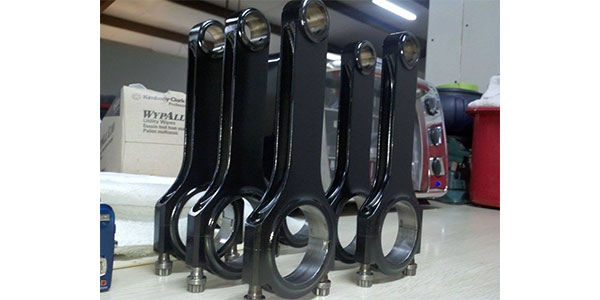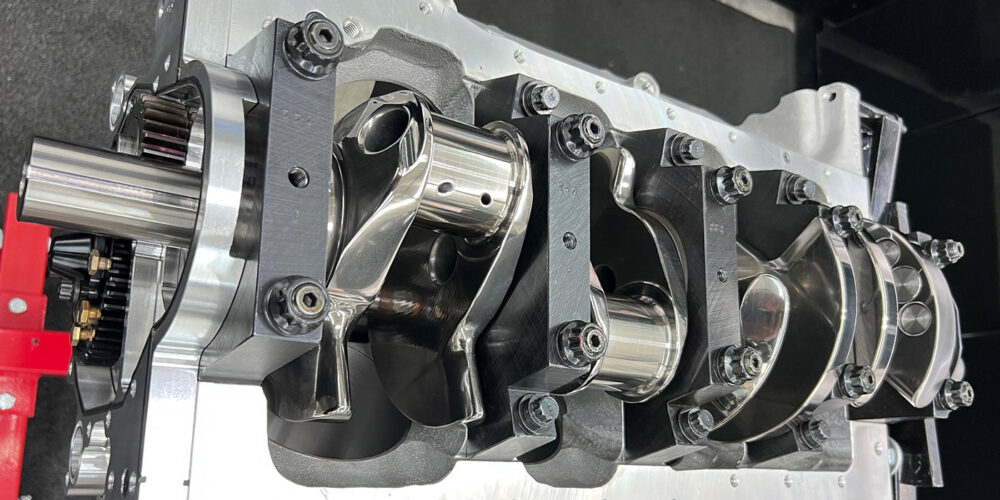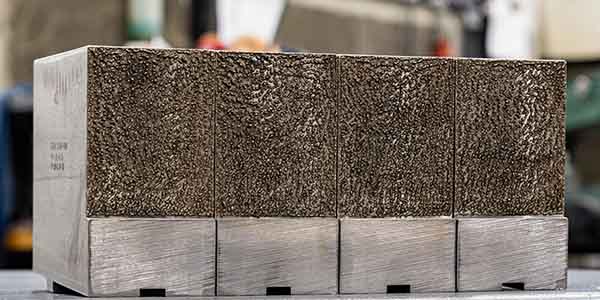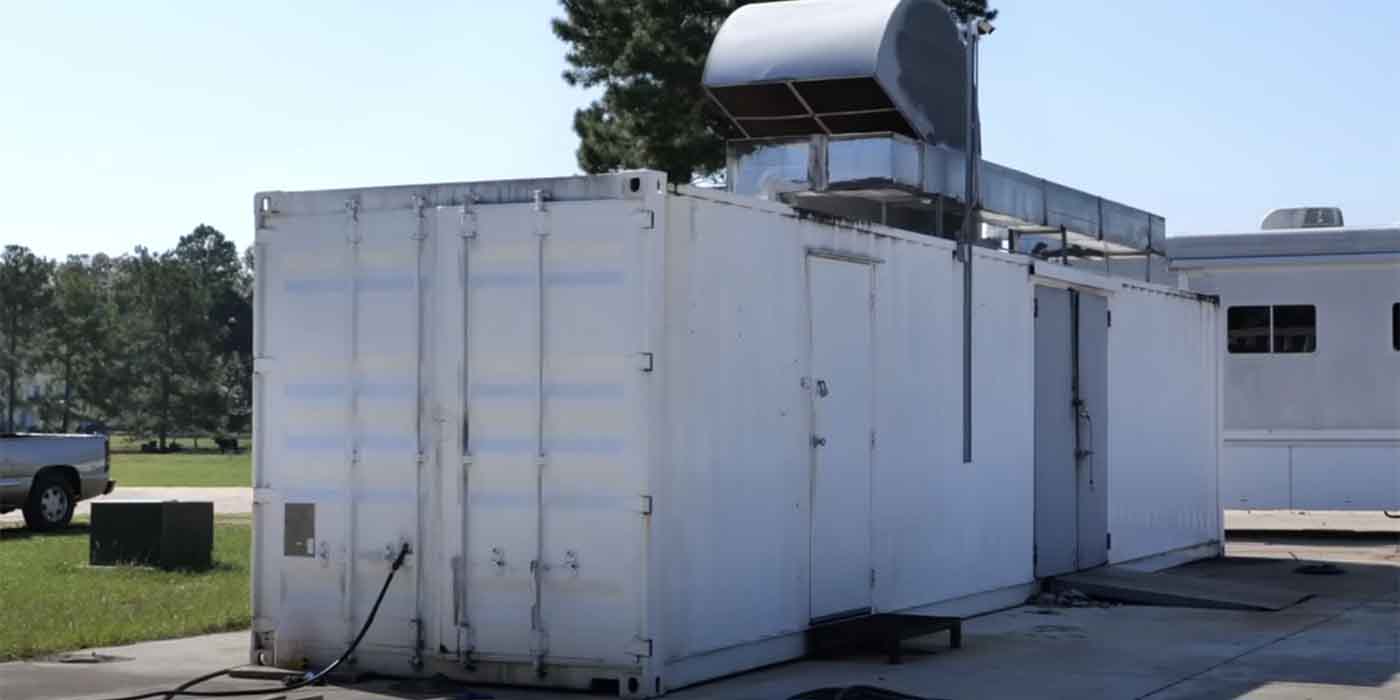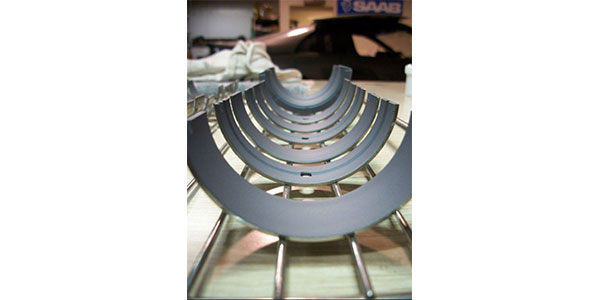
In today’s performance driven, engine building world, everyone wants to squeeze out another few horsepower, deliver more torque, create less friction, wear and heat, and ultimately, make the engine last longer. How do you all of that you ask? Parts coatings. Coatings are quickly becoming one of the best ways to create these kinds of gains in a performance application. There are many different coating options available depending upon your clients’ budgets and an engine’s application, and we’re going to give you a breakdown of several of them, as well as some information on applying coatings to various engine parts and the benefits behind it.
Dry Film Lubricant Coatings
Mitchell Wilson, owner of Engineered Performance in Texas, is a big advocate of using parts coatings. In fact, his shop won’t even build an engine these days without some form of coatings involved.
“We use coatings on every engine,” Wilson says. “Every engine we build, at the very minimum, gets the bearings coated, the pistons DiamonDyzed and the skirts and the crown get a top coat. That’s the very bare minimum that we offer. That is required on all of our engines that those coatings are done. Anything additional is up to the customer’s discretion.”
Wilson became an advocate for coatings after an engine builder friend recommended he give them a try. Wilson experimented with some Tech Line coatings on a Pro Stock assembly and has been using them ever since.
“From that day on, I noticed parts came out looking a lot nicer, they performed a lot better, there wasn’t as much damage to the parts, etc.,” he says. “That was back in 2007. I’ve been applying coatings to parts ever since and I haven’t looked back.”
Wilson primarily uses DFL or Dry Film Lubricant coatings, thermal barriers and oil shed dispersants on his engines. DFL coatings are mostly moly disulfide-based (MoS2) and derived, and there are tons of parts you can use these coatings on.
“Anything that has a sliding or oscillating surface to it that’s a soft alloy like aluminum or lead that can take a form of ceramic or moly, we’ll use the DFL-1,” Wilson says. “Harder compounds like the Thermal Lube (TL) we’ll use for ring and pinions, piston skirts, crankshaft journals – anything hard that has that type of substrate to it, we’ll use a higher content ceramic on it. Thermal barriers such as Polyphen, we’ll use on combustion chambers, valve faces, the crowns of pistons, and things like that. We also use thermal barriers that work in exhaust ports, inside of turbine housings for turbochargers and exhaust headers.”
Applying Coatings
While a coating is available for any engine application, and just about any part these days, the process of applying the coating is what’s of utmost importance. First and foremost, all parts have to be inspected before you actually apply a coating.
“We’ll go through and check any defects and clean the parts very thoroughly to make sure there’s no grease, grime, grit, or debris lodged in there,” Wilson says. “All that stuff has to be removed. If it’s a used piston, we’ll typically gas the piston out to get rid of all the oils that are in the substrate. Then we’ll tape up the ring lands on the pistons, and if there’s any debris like iron from the cylinder liners or the bore, we’ll glass bead the skirt first to get all the foreign debris out and then we’ll go through and use aluminum oxide. All parts that are to be coated, whether it’s a crankshaft, piston or connecting rod, all of it has to be thoroughly cleaned, degreased and blasted with aluminum oxide with a minimum of 100 grit. What that does is shear the outside layer very thin and expose the substrate. It makes it very porous.”
Once you’ve done this inspection and cleaning step, you’ll have to clean the part a second time to ensure all the dust and debris from the aluminum oxide is removed. Once you have the part washed, rinse it down with acetone and let it dry. Now you’re ready to apply whatever coating you’re going to use. After your coating is applied, oven cure the part to heat bond the coating to the part.
“The process is time intensive,” Wilson admits. “You have to make sure the process is done right. I’d say 70% of the work is in the prep. It will make or break how the coating is applied and bonds to the parts if it’s not done correctly.”
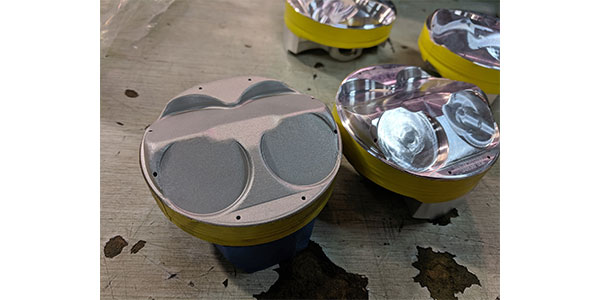
Benefits
When coatings are applied correctly to key components, there are countless benefits to the performance of an engine.
“It does have an upside to it,” Wilson says. “It’s not just, ‘Hey, we’re going to paint this stuff on here and hope for the best.’ We have noticed an increase in efficiency by way of the engines running a little bit cooler because there’s a lot less friction involved having everything coated. Having thermal barriers applied to the crown of the piston, the combustion chamber and valve faces, the exhaust port, the exhaust manifold, and the turbine housing, shields radiant heat from being absorbed into the cylinder head itself and will also speed up the exhaust gas velocity. We’ve seen some engines increase their spool rate by 800 rpm from having all that thermal efficiency in the exhaust system for a turbocharger application. It does have quite a bit of benefit.
“As far as the dry film lubricants (DFL) are concerned and the oil shed dispersants, we’ve seen engines operate much easier under extreme use because it doesn’t have to fight all that friction. There’s a good boundary layer that protects itself and allows cooler running temperatures. Also, DFLs have a very high pressure resistance to them.
“We offer these additional coatings and we would love to be able to have the client take advantage of all the coatings because it provides these benefits. We’ve seen some engines pull up another 20-plus horsepower just by having the combustion chamber and pistons coated.”
DiamonDyze Ceramic Anodizing
Another coating option is the DiamonDyze process developed by Hupe Manufacturing in Ontario, Canada. DiamonDyze is a form of Type II anodizing, which unlike a Type III anodizing, will not substantially grow the part.
“The DiamonDyze process is exactly the same process as a standard, Type II anodizing,” Wilson says. “The difference is when they apply color to the aluminum part you’re going to process. When they apply the color to it in the tank, they also apply the ceramic solution. Because there’s a positive and negative charge present, that excites the aluminum molecules and they actually grow and swell up a little bit. The ceramic then fills in between those aluminum molecules, and when they release the charge, all the aluminum molecules suck back together and that ceramic is compacted.”
What does that mean for the part? For one, you’ve structuralized the surface area, most times up to .003˝ deep within the substrate, which makes a harder wear surface for things to run on. Two, it’s an extreme form of lubricant and becomes a very slick surface. Three, parts run much cooler and heat dissipates off more efficiently.
“It’s a phenomenal product and all the pistons that we use, whether it be CP, Wiseco or JE, we will DiamonDyze as part of our standard package that we do for our coatings,” he says. “It will drastically reduce the amount of friction and heat that piston sees. It is a very potent type of anodizing that resists a large amount of damage when it comes to detonation. It also drastically reduces the amount of tension or the amount of force it takes to rotate the engine over.”
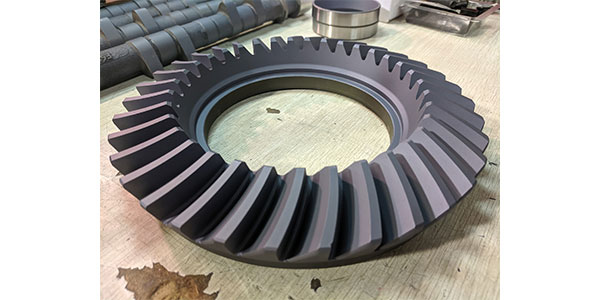
Do Coatings Affect Clearances?
A frequent question when it comes to coating parts is whether a coating grows a part to the point it would affect clearances. The answer is, it depends on the type of coating.
A lot of coatings are a super thin, DFL, which really doesn’t register as far as thickness is concerned. There are, however, coatings that can grow a part. You just have to be aware of what coating you’re using and whether you’re objective is to grow that particular part or not.
Typically, coatings don’t grow the part because even when the coating is applied, before you actually put the part into service, you have to burnish the outside layer of it.
“What that does is it knocks all the high spots down and you get it down to where the coating is actually bonded to the part,” Wilson says. “When you go to measure it, there’s really no difference at all that registers on the mic. It stays primarily the same. If the coating is applied correctly and everything is set up, it has pretty much a zero dimensional change to any of the parts you apply a coating to.”
As mentioned earlier, processes like Type III anodizing will build up aluminum on top of the substrate. A lot of guys like running that for Top Fuel or really high horsepower drag applications because it is very hard and you can add a lot of durability to the part. The downside is you do have to compensate for that and add clearance based upon it.
Hard Substrate Coatings
These coatings have a very low coefficient of friction. They are extremely slippery and have a high resistance to wear, as well as being none conductive. Gregg Hekimian of Hekimian Racing Engines in Watertown, MA, specializes in these types of coatings, and there are many different components they can be applied to; wrist pins, valves, spring retainers, rocker arm roller tips and axles, lash caps, piston skirts, rings, camshaft lobes and journals, timing gears, crank gears, needle and ball bearings, lifter bodies, pushrods, carburetor kinematics, supercharger gears, oil pump gears, and transmission and differential components.
Here’s how these coatings can benefit various engine components:
Valves and Valve Locks
Using these coatings, valve jobs will last longer. The stems will reduce friction, thus no wear on the softer bronze-type guides. The tips are harder and slippery, so no wear here as well. Coating valve locks take heat away and provide a more uniform surface for contact.
Rocker Arm Roller Tips, Axles and Bearings
Coating these components offers a smoother arc, cools this area down and gives bearings longevity.
Piston Skirts
Applying a hard substrate coating to piston skirts offers tremendous friction loss, allows the engine to turn over much more efficiently and rpms can increase quicker. However, because aluminum moves around, it can crack the substrate. But if you’re racing and frequently replace parts, then it’s a winning solution on race day.
Camshafts
The cam journals are the supporting factor of the strength of the cam as well as the core. Bigger journals are a must when it comes to aggressive cams and coating your babbit cam bearings is very important for friction reduction. With a hard substrate on your journals, your oil is cooler in that area and your cam will turn over faster. Coating the cam lobes with hard substrate may not be necessary. If you’re using any roller type lifters with a hard substrate, this will slide the roller wheel rather than roll. However, if you’re using a flat tappet cam, sliding the flat lifter across the lobe is the way to go.
Lifters
Flat tappets are a big gain when coating the body and parabolic bottom surface – it’s almost indestructible. With roller lifters, the wheel should be left alone. However, the wheel does have an axle and coating this axle with a hard substrate will glide smoother against either your bushing or needle bearing. Coating the axles and bodies is a good way to increase life, torque and horsepower.
Timing gears
As your timing gears get loaded down with pulling and pushing through the up and down of rpms, these teeth take a tremendous pounding. The friction that goes on in this area is big. A hard substrate on the gears will lower the temperature in that area and provide a quicker throttle response.
Pushrods
Not many think about this vital piece in the engine, only that a larger diameter is stronger and has less flex, which is true and should not be overlooked. A hard substrate coating here increases the pushrod’s strength and reduces friction and heat.
Superchargers
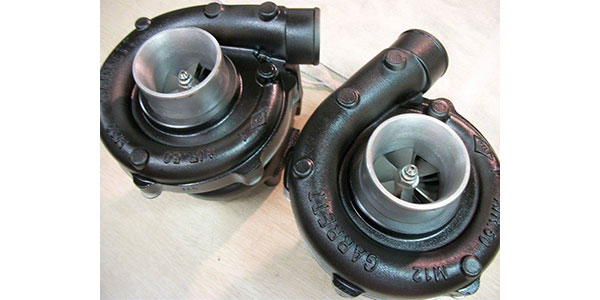
Coating the inside of an aluminum blower case provides exponential friction losses. Heat is drastically reduced, thus having more dense air / fuel atom dispersing into the cylinder for combustion. Don’t forget the gears and bearings in the blower too.
Oil pumps
The harder the oil pump drives, the greater the wear, horsepower and torque loss. Oil can heat up in this area as well. Using a hard substrate coating will cool this component and allow the pump to turn much easier. If the body of the pump is not a smooth billet aluminum or metal, then a high quality, DFL can be used to aid performance.
If you’re using a dry sump pump, horsepower loss and wear should not be taken lightly. Treating all of those parts and walls of this pump is a tremendous gain.
Transmissions and Differentials
You really want to see gains here. Your vehicle cannot go any faster and win races with 20%-25% frictional drag load in this arena. A lot of your flywheel horsepower and torque is thrown away through your transmission and differential. Using hard substrate coatings on all the gears, main shafts, bearings, couplers, and bushings gives you icy smooth gear changes. You can feel the difference by just rotating your transmission by hand. Same with the rear end – coat the ring and pinions, spider gears, shafts, bearings, and anything that causes friction.
“The list of components can go on and on as this is only a fraction of what can be treated,” Hekimian says. “Coatings are simply utilizing the laws of physics to your engine’s advantage.”
While applying coatings may sound time intensive – and it can be – the performance gains available to your engine builds will keep your customers happy, winning and coming back for more, which means more business for you!

